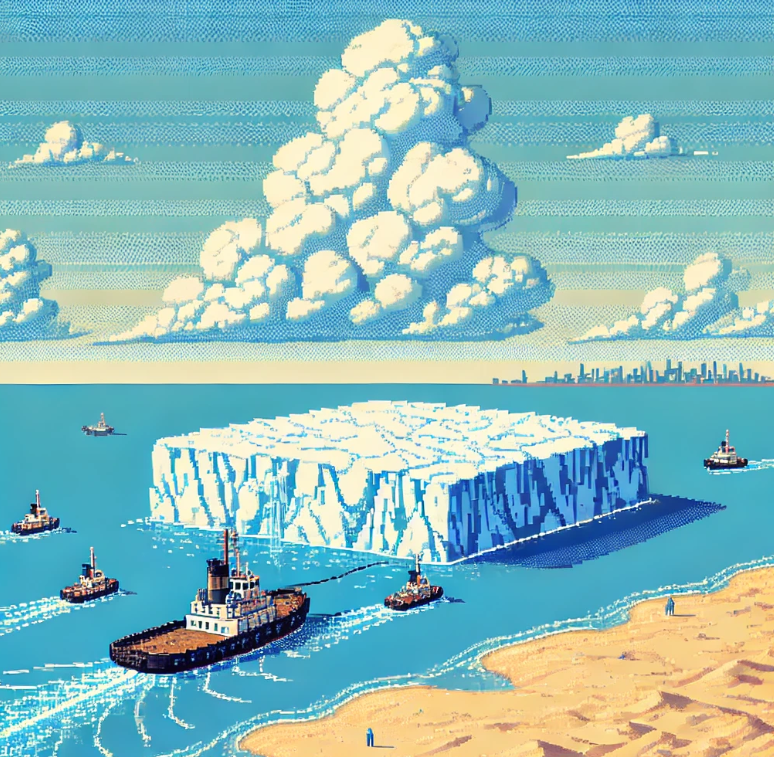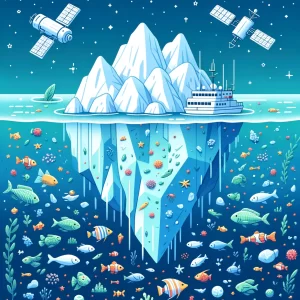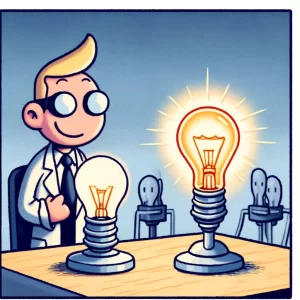
Could Icebergs Quench Global Thirst? Iceberg Towing Dream
Imagine a world where the solution to drought lies not in the clouds, but in the icy expanses of Antarctica. Picture colossal icebergs, not as frigid relics of the polar regions, but as potential lifelines for parched cities. This might sound like the plot of a science fiction novel, but it’s a concept that scientists have been toying with for over a century. Now, recent research has breathed new life into this audacious idea, revealing how towing icebergs to water-scarce regions could be more than just a pipe dream.
As we dive into the fascinating world of iceberg towing, we’ll explore the science behind it, why it matters, and what the future might hold for this frozen resource. It’s an icy adventure that could change the way we think about water forever.
The Iceberg Towing Concept: A Bold History
The idea of towing icebergs isn’t new. In fact, it dates back over 200 years when small icebergs were towed for refrigeration in South America. But it wasn’t until the mid-20th century that the concept of using icebergs as a freshwater source began to gain traction. John Isaacs, a visionary at the Scripps Institution of Oceanography, first proposed the idea in 1949, sparking a wave of scientific curiosity and debate.
Over the decades, the idea has been met with both enthusiasm and skepticism. While icebergs have been towed short distances to protect offshore oil rigs, the notion of hauling massive icebergs across oceans to supply freshwater to drought-stricken regions remained largely theoretical—until now.
The Science Behind the Iceberg Towing Model
In a groundbreaking study, scientists used a numerical model to simulate the journey of icebergs from Antarctica to Cape Town, South Africa, and the United Arab Emirates (UAE). Their goal? To determine if these frozen giants could survive the long tow and deliver much-needed freshwater to these arid regions.
The results are as impressive as they are surprising. According to the model, an iceberg capable of reaching Cape Town would need to be at least 300 meters long and 200 meters thick at the start of its journey. It could deliver about 2.4 million liters of water, enough to meet the daily water needs of nearly 900,000 people. And if insulated to reduce melting, that figure could soar to 4.5 billion liters—a staggering amount that could significantly alleviate water stress.
For the UAE, the challenge is even greater. An iceberg destined for the Middle East would need to be over 2,000 meters long and 600 meters thick, requiring a fleet of 10 to 20 vessels to tow it. Yet, if successful, it could provide enough water for nearly 2.3 billion people for a day—a game-changer for a region that relies heavily on desalination.
Why Should We Care About Iceberg Towing?
At first glance, the idea of towing icebergs might seem like a far-fetched, even whimsical solution to water scarcity. But consider the stakes: by 2025, an estimated 1.8 billion people will live in regions facing absolute water scarcity. Traditional water sources like rivers, lakes, and underground aquifers are dwindling, and climate change is exacerbating droughts around the globe.
In this context, iceberg towing isn’t just a quirky idea—it’s a potential lifeline. Unlike desalination, which is energy-intensive and expensive, icebergs offer a natural source of freshwater with minimal environmental impact. If the logistical and economic challenges can be overcome, this method could provide a sustainable solution to one of the most pressing problems of our time.
The Challenges Ahead: Navigating Rough Seas
Of course, towing icebergs isn’t without its hurdles. The journey from Antarctica to warmer climates is fraught with challenges. As the iceberg travels, it encounters rising air and water temperatures, accelerating its melt. The research showed that even at optimal speeds, icebergs lose a significant portion of their mass before reaching their destination.
To mitigate this, scientists explored wrapping icebergs in insulating materials or using geotextile skirts to protect them from wave-induced erosion. These strategies showed promise, with smaller icebergs retaining up to 35% of their volume when insulated. However, the logistics of applying such measures on a large scale remain daunting.
Then there’s the question of harvesting the water. Once an iceberg arrives, it needs to be quickly and efficiently mined for water before it melts away. Ideas range from open-cast mining to melting the iceberg in a dry dock, but each method comes with its own set of technical and economic challenges.
Connecting the Science to Our Daily Lives
So, why should the average person care about iceberg towing? Because water is life. Whether it’s for drinking, cooking, farming, or hygiene, water is an essential part of our daily lives. And as the world’s population grows, the demand for this precious resource will only increase.
Iceberg towing represents a bold, innovative approach to meeting this demand. It reminds us that solutions to global problems can come from the most unexpected places—even from the frozen depths of the Antarctic. By pushing the boundaries of what’s possible, this research inspires hope that we can find sustainable ways to address the world’s most critical challenges.
The Future of Water: Could Icebergs Be the Answer?
As we look to the future, it’s clear that we need to explore every possible avenue for securing freshwater. Iceberg towing might not be the sole solution, but it could be a vital piece of the puzzle. It’s a concept that combines cutting-edge science with a deep understanding of our planet’s natural resources, offering a glimpse into a future where droughts are less devastating and clean water is within reach for all.
Join the Conversation
What do you think about the idea of towing icebergs to provide freshwater? Could this be a viable solution to global water scarcity, or are there better alternatives we should pursue? Share your thoughts in the comments below!
Transform Your Science World
Get the latest and most inspiring scientific updates with ‘This Week in Science’! Perfect for educators and science enthusiasts, our free weekly newsletter delivers groundbreaking research and stories that ignite your passion for learning and teaching. Sign up today and transform your approach to science. If you liked this blog, please share it! Your referrals help This Week in Science reach new readers.



